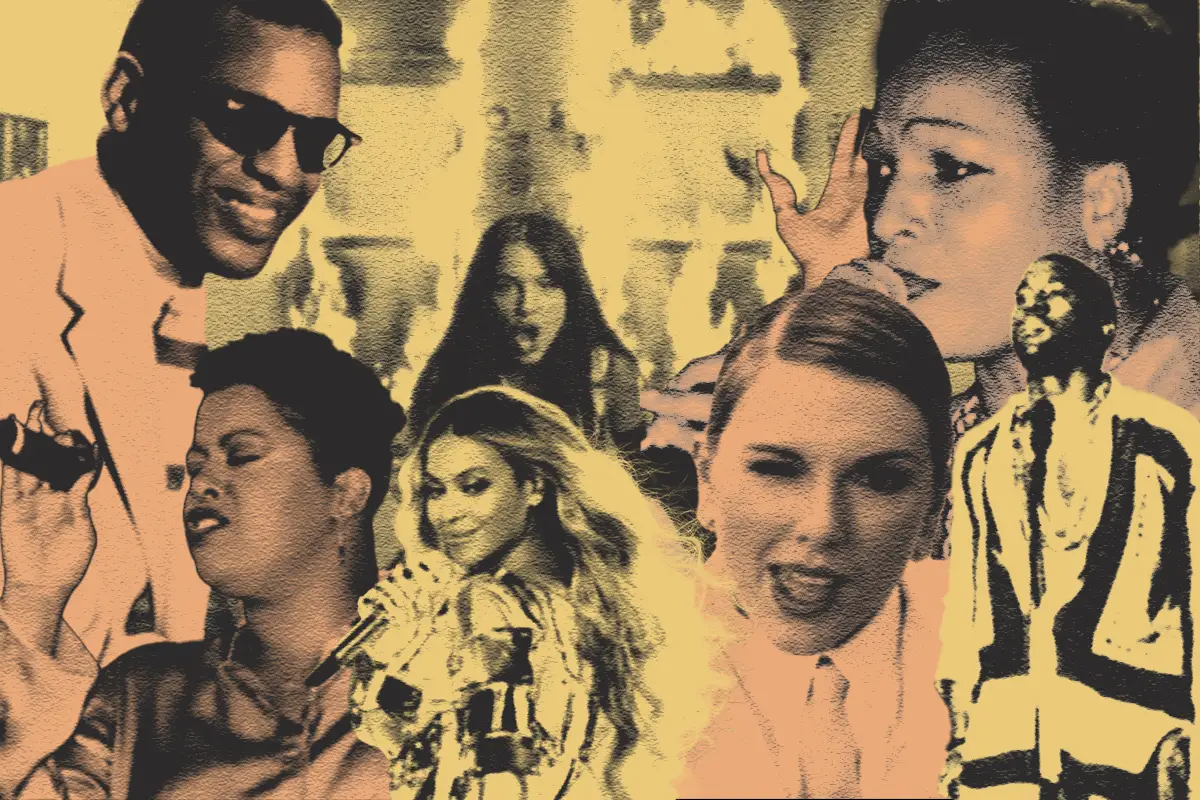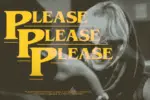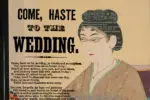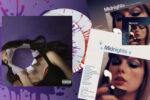What do American rapper Kanye West and pop star Olivia Rodrigo have in common? While at first glance it may appear to be nothing but musical talent, when you take a closer look, you’ll see that they both use samples of past songs in several of their hits.
A sampled song takes elements from a pre-existing track and melds it into a new song. To be done legally, it requires permission from the original owner of the components being used. Most of the time, this proves to be no issue. However, even though it’s legal, should this be considered a part of the norm in today’s music society? Is sampling something that reinforces creativity, or does it stifle it?
Although it may be easy to dismiss samples as a lack of originality, mixing tracks from older songs sheds new light onto these older melodies. Being able to transform an existing hit tune into something vastly different is a form of creativity in and of itself. It breathes a new life into music, turning something that may have been long forgotten into the next Billboard Hot 100 hit.
Kanye West is a perfect example of utilizing this skill to make the most out of something that could have once been considered tired.
One of Kanye’s more famous examples is the song “Gold Digger,” released in 2005. The opening verse and recurring background vocals are a near copy and paste of Ray Charles’ song “I Got a Woman,” released in 1957. What makes Kanye’s song stick out is his transformation of the song’s protagonist from a generous, friendly woman into a sleuthing, money-obsessed “gold digger.”
The track “Famous” from his 2016 album, “The Life of Pablo,” includes a sample from “Bam Bam” by Sister Nancy produced in 1962. “Fade” features samples from the late Aaliyah and Barbara Tucker. Each track on this renowned album features a significant amount of sampling and reinvention.
Even the renowned Beyoncé can’t get away without sampling past music. Her 2022 hit “Break My Soul” samples the Stonebridge remix of the song “Show Me Love” by Robin S., an iconic house hit from the 90s. This is just one example of sampled songs in her music. Similarly to Kanye, nearly every other song on her 2022 album, “Renaissance,” contains some form of reinvented old tunes.
If someone as prominent as Beyoncé is using music from previous years, that seems like the go-ahead for any current musician to partake in this musical tactic.
Where sampling gets tricky is when there is controversy over whether the sample was obtained legally or not. This is where Olivia Rodrigo finds herself in a twisted situation.
On her first album, Rodrigo was accused of “stealing” bridges and melodies from famous artists such as Taylor Swift and Paramore. Most notably, Rodrigo’s hit song “good 4 u” has a melody reminiscent of Paramore’s “Misery Business.” Similarly, parts of the song “deja vu” have an eerily similar melody from “Cruel Summer” by Taylor Swift.
In both cases, Rodrigo isn’t using an exact duplication of the songs but instead uses similar components, such as the melody and particular chord sequences. Rodrigo is allegedly paying over a million dollars in royalties to the artists because she listed them under songwriting credits, but the singer is arguing that these assertions are missing the point.
Frustrated with these accusations, Rodrigo made the statement, “Nothing in music is ever new.” Having such strong words thrown around about her songs calls into question the integrity of Rodrigo’s musical process. It is exhausting for her to be put in the hot seat, ridiculed for doing something that nearly every other artist does. After observing how many prominent artists in today’s music industry engage in sampling music, it’s clear that her words ring some truth. While the level of sampling can vary, most of the time it’s being used as a means of exploring new ways to present old songs.
In Rodrigo’s case, she happens to only be using similar melodies to other songs. Kanye, on the other hand, has used direct lyrics and identical beats. Since these artists are giving credit to their inspiration, they are both legal and creative ways of experimenting with repurposing music.
Taking a broader look at these assertions against Rodrigo highlights some of the underlying problems within not only the music industry, but society as a whole. The accusations seem to be targeted at a young, up-and-coming female artist.
Kanye wasn’t questioned about his multitude of sampled songs, and neither was Drake for sampling multiple artists on his track, “Champagne Poetry” from the 2021 album “Certified Lover Boy.” He uses both exact melodies from Masego’s 2017 song “Navajo,” and remastered Gospel excerpts from “Until I Found the Lord (My Soul Couldn’t Resist)” by The Gabriel Hardeman Delegation released in 1976.
Rodrigo’s recent rise to fame as a young female artist makes her an easy target for criticism. Women in general have more double standards in place for them, combined with her inexperience allows people to direct any form of condemnation towards her. She is being ridiculed for doing the same thing that hundreds of other musicians do in countless tracks. Why should she be shamed for taking advantage of a creative music production strategy, when her male counterparts and more experienced artists aren’t?
Age, gender, or experience doesn’t change the fact that today’s music industry allows for, promotes, and rewards recycled tunes. When an artist legally taps into another established song, they essentially double the potential audience for their new creation. It will get added to more playlists and will generate more streams. The more a song is streamed, the more revenue the artists will receive.
Just because something is being recycled doesn’t mean it’s a bad thing, either. Anybody who is imaginative enough to see musical potential in older songs deserves credit for their creativity. Not to mention, we have the technology available that enables us to make these transformations in dramatic ways, such as the invention of portable digital samplers or Kanye’s own Donda Stem Player. Sampling has been around since the late 40s and early 50s, but the means of production of sampling equipment were costly, and it didn’t allow for the type of sampling that we see today.
Some of the songs that are sampled have been forgotten but are given a new purpose and a new rise to popularity. Older generations get to hear some of the songs from their years again but in contemporary formats, and younger generations are getting exposed to these classics in a way that will make them listen. If we get to experience a new wave of songs that incorporate both originals and modern remakes, that’s music to my ears.

















